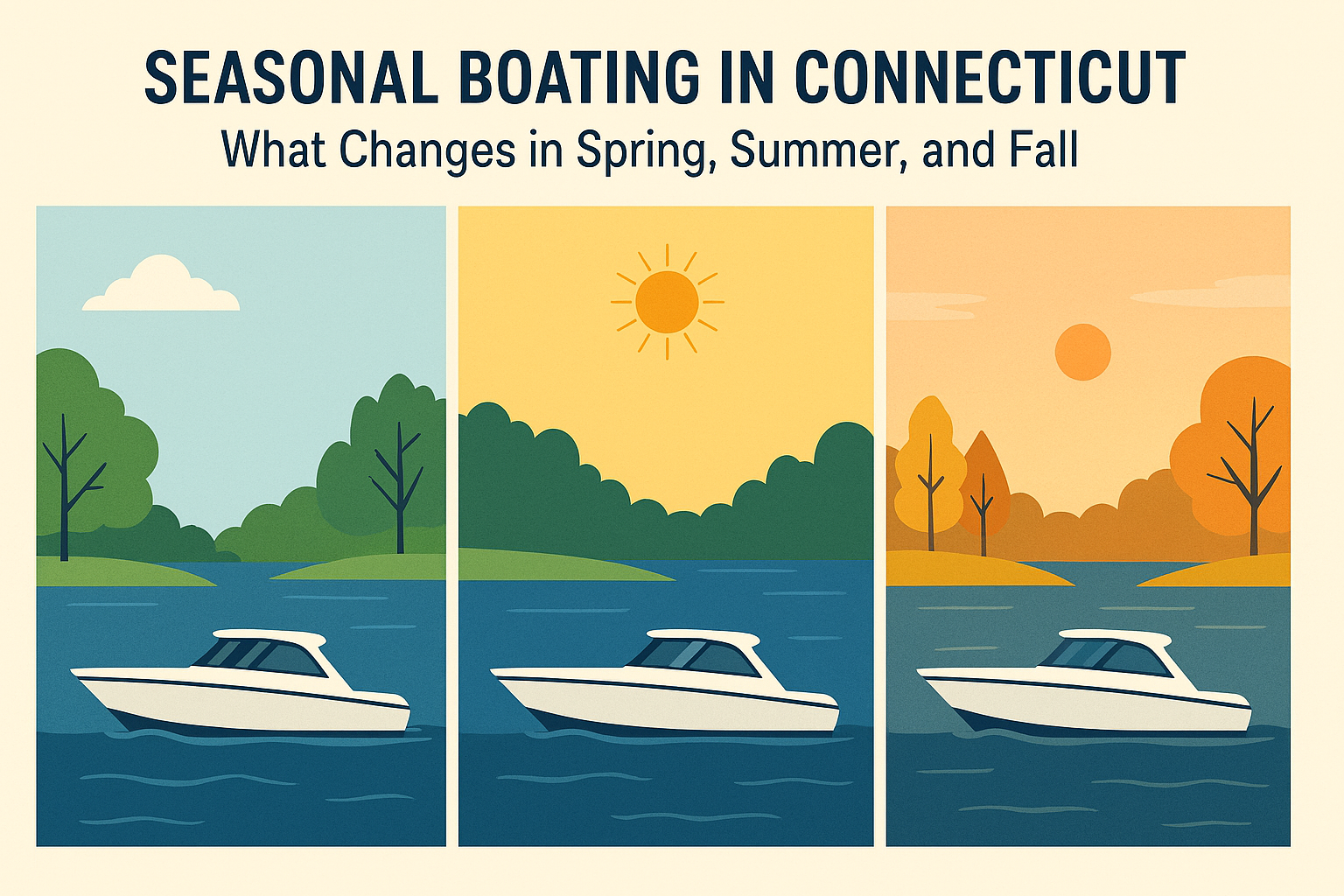Call: 1-800-832-7191
Seasonal Boating in Connecticut

Seasonal Boating in Connecticut: What Changes in Spring, Summer, and Fall
Boaters across the state experience unique conditions each season. This Seasonal Boating in Connecticut article helps you prepare. Understanding these shifts improves safety, enjoyment, and compliance with local regulations.
Spring brings cooler waters and unpredictable weather. Summer offers peak activity and warmer temperatures. Fall introduces quieter waterways and changing foliage. Each season requires different gear, awareness, and planning.
Spring Boating: Prepare for Cold Water and Variable Conditions
As the ice melts, spring boating begins with caution. Water temperatures remain dangerously low despite warmer air. This can be deceiving. Wearing life jackets becomes even more critical. Hypothermia risks increase with unexpected immersion.
Additionally, spring storms arrive quickly. As always, checking forecasts before launching helps avoid dangerous conditions. Boat maintenance also matters. Winter storage may cause wear or damage. Inspecting engines, hulls, and safety gear ensures readiness.
Wildlife activity increases in spring. Migrating birds and spawning fish affect navigation. Respecting no-wake zones and protected areas supports conservation efforts. Early-season boaters enjoy peaceful waters with proper preparation.
Summer Crowds and Safety Tips for Seasonal Boating in Connecticut
Summer marks the busiest time on Connecticut’s waterways. Seasonal Boating in Connecticut becomes most visible during this peak. Increased traffic demands heightened awareness and courtesy.
Launching early or late avoids congestion. Midday hours often bring the most boaters. Staying alert prevents collisions and improves response time. Sunscreen, hydration, and shade protect against heat-related issues.
Law enforcement patrols increase during summer. Officers check for registration, safety gear, and impaired operation. Following rules avoids fines and ensures safe outings. Summer also brings more events and fireworks displays. Planning ahead helps navigate closures and restrictions.
Fall Boating: Enjoy Tranquility and Scenic Views
Autumn offers a quieter, more reflective boating experience. Fewer vessels mean less noise and more space. Fall foliage creates stunning backdrops for cruising and fishing. Cooler temperatures require layered clothing and weather checks.
Shorter days affect visibility and timing. Launching earlier ensures safe return before sunset. Fog and morning frost may impact navigation. Cleaning and winterizing gear after each trip prepares boats for off-season storage.
Wildlife remains active in fall. Migrating birds and feeding fish attract photographers and anglers. Respecting nature and fellow boaters keeps the experience enjoyable. Fall boating rewards those who embrace seasonal changes.
Tips for Adapting to Seasonal Boating in Connecticut
Adapting to Seasonal Boating in Connecticut requires flexibility and awareness. Each season brings new challenges and opportunities. Reviewing DEEP guidelines ensures compliance and safety.
Spring demands cold-water gear and storm readiness. Summer calls for crowd management and heat protection. Fall requires early launches and winter prep. Transitioning smoothly between seasons improves your boating experience.
Maintaining your vessel year-round prevents costly repairs. Scheduling inspections before each season helps identify issues early. Staying informed through local boating groups and DEEP updates keeps you ahead of changes.
Enjoyed this blog? Check out more on our Boaters Blog page.
